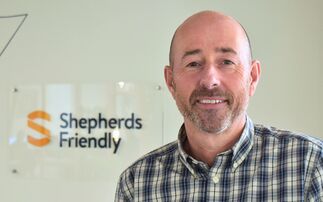Steve Devine discusses the current issues with the income protection market and why we should re-ignite the Simple Products debate.
"So I took a very small and unscientific straw poll of 20 people I know and asked them if they had income protection.
Most looked at me blankly, some asked if that was the same as PPI and a couples aid they had something called critical illness with their life insurance - "so was that ok?"
""But whether a simple IP product is developed or not, what is definitely needed is a fresh look at how income protection is sold. We could start by calling it income insurance.
"This would mean more to consumers - they are used to car insurance, house insurance, travel insurance, why make things more difficult than they need to be?"(Income Protection - A consumer's View, Teresa Fritz, 2014)
Teresa lead the Simple Products working party on Income Protection - part of the Treasury initiative that the industry should create a suite of Simple Products.
I was on the working party too, sadly we failed to get income protection on to the first suite of simple products.
The major stumbling blocks for the working party were:
• Individual Income Protection is not really a simple product that could be pushed out to the mass market.
• Traditional long term IP is generally sold by advisers and not direct to consumer.
• Its' also too expensive for the majority of the working population.
• The finished product must not look like PPI, no one can admit to be supporting that again.
• Finally a lack of appetite for the task from the industry.
Whatever happened to the Simple Products initiative, it seems to have slipped off the radar?
So I asked my protection contact at the ABI what was its current status?
The response I received last week was "Regarding Simple Products, this work is ongoing. A number of things have delayed the project to date but we are hoping to have it up and running early this year."
I personally thought this initiative could be a real opportunity for STIP (short term income Protection) but the second stumbling block, of it resembling PPI basically strangled it.
STIP providers have not been able to give STIP its own identity, even today the market is split between STIP policies written as long term policies and others written as General Insurance policies covering the same Accident, Sickness, and quite often unemployment that Creditor policies/PPI & MPPI covered.
We have got different names for the policies, probably far too many of them, in fact.
One of the problems of providing consumers with choice is that it further complicates the buying process.
STIP policies have made it on the major aggregator websites, they all have them on their protection panels along with some MPPI and ASU products.
In this environment it's all about the price, apart from some niche requirements, most of the business will go to the top three lowest priced products.
It's a very hard environment indeed because in addition to the pricing situation the claims levels will be much higher than those policies sold as part of the mortgage process.
Which is another area of concern for income protection providers who have struggled in recent years to increase sales of IP in this market.
Quite often too it's the sales of their short term policies that are growing at the expense of the full term policies.
Despite some encouraging mortgage market numbers, related protection insurance sales are still struggling.
ABI figures show that around 100, 000 new long term IP policies in 2014 and 35% of those were the shorter benefit period, STIP type products.
It's also significant that only 105 new IP policies were purchased without the services of an intermediary.
If you just read the first few chapters of the book "The Optimism Bias " by Tali Sharot, you will find what I think is the main stumbling block for the sales of life, protection and health insurance today.
Humans are hard wired to be optimistic - they know bad things can and will happen to people but not to themselves. They are in control of the situation or perhaps just lucky. If only it were true!
The road to improving this situation has so far been long, difficult, and fragmented.
It needs a far more co-ordinated approach from all the stakeholders involved. It needs technology to deliver affordable, simpler products, faster and more accessible to the employed population, especially to the fastest growing section, the self- employed and SME's.
Alongside this we also have to deliver education and training about personal finance and financial risk management to the public, starting in our schools now.
The education side is probably longer term before positive results show but I am always amazed how well and quickly young people catch on to something, especially when it makes such good sense.
Steve Devine is chairman of The Protect Association











